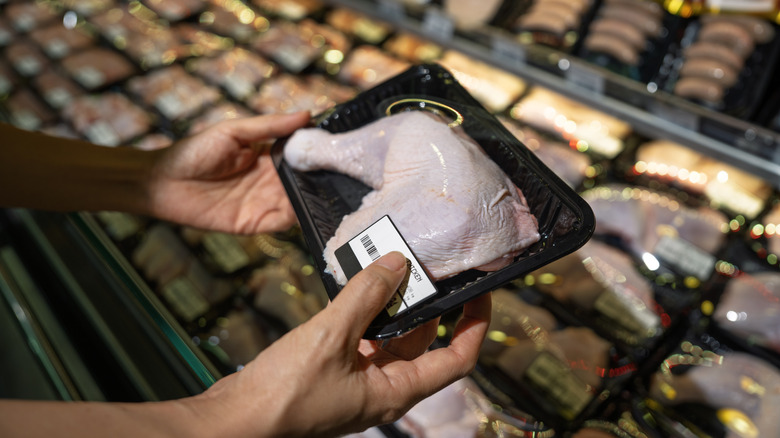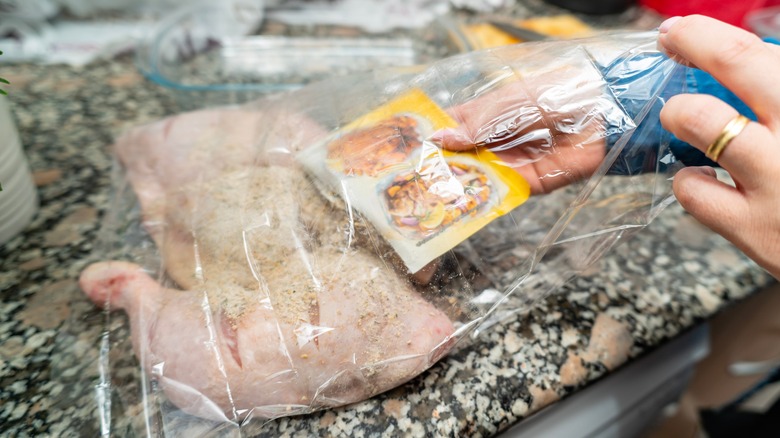You're Probably Making This Raw Chicken Mistake At The Grocery Store
Most often, shopping for chicken is a mindless grocery task: Select a cut, add it to your cart, then refrigerate until it's time to prepare that at-home orange chicken recipe you've been eyeing. Nevertheless, it pays to brush up on sanitation throughout the process, as even slight mishandling can lead to unforeseen risks.
One especially common mistake happens right when you grab a package: You need to separate the poultry from other foods. Yep, simply placing that plastic-wrapped styrofoam tray into the cart isn't enough. It's critical to coat the protein in more protective layers and place it at a distance from other items — ideally inside a single-use plastic bag — to prevent disease. For extra assurance, carry your poultry separately during the shopping experience, then properly store it in a sealable container inside your refrigerator.
These precautions all come down to juices. Even though the odds of the chicken itself touching other produce are slim, excess liquid can still dribble. If this substance makes contact with other food, dangerous infections like salmonella, norovirus, and campylobacter could result. So for optimal safety, cover the poultry in an added layer of protection.
Handle packaged raw chicken carefully to prevent cross-contamination
Safely handling chicken comes down to preventing cross-contamination. Unfortunately, this protein is prone to carrying foodborne illness; as many as 4% of chicken packages contain salmonella (per the CDC). So, tighten up your chicken handling habits to lower the odds of disease.
If you see any grocery store cross-contamination — such as raw chicken sharing fridge space with ready-to-eat foods — it's best to skip buying a package. Otherwise, place the protein in your bag, but don't let raw meats share space with other groceries. Even at checkout, request an additional carrying vessel, and if you brought your own reusable option, designate it as the butcher bag — a vessel best cleaned after each use. If you notice any spilled juices, don't risk future cross-contamination: Dispose of the package immediately. Salmonella can live on surfaces for up to 32 hours.
Aim to get the chicken home in well under two hours. Then, place the meat — still contained in two layers — into the lowest section of your fridge, which is the safest place to store raw poultry. No need to get too anxious about infections. Just run a tight ship when buying and handling chicken, and you can enjoy your meal stress-free.


